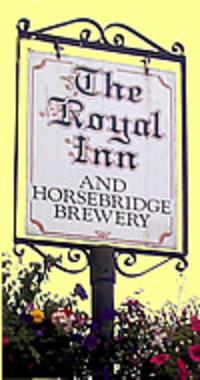Many thanks to
The Royal Inn for facilitating this camera's location and to the
Westcountry Rivers Trust for capitally funding its installation. On December 27, 1439, the construction of Greystone Bridge was undertaken with the grant of a 40-day indulgence by Bishop Lacy of Exeter. It is believed that both Greystone Bridge and Horsebridge, which span the Tamar River, were erected by the same individual. The patron responsible for overseeing the construction of the bridge is thought to have been an Abbot of Tavistock. Throughout the years, the parapet of the bridge suffered damage from large vehicles, necessitating repair work in November 2007. During this restoration, the entry approach on the Cornwall end was widened, and traffic signals were replaced. Currently, Greystone Bridge holds the esteemed status of a Grade I listed structure and is recognized as a scheduled ancient monument, ensuring its preservation.The river Tamar has a total of 22 road crossings, including several medieval stone bridges. The oldest surviving bridge is located at Horsebridge (1437), followed by Greystone Bridge near Lawhitton, an arched stone bridge constructed in 1439. Gunnislake New Bridge, built in 1520 by Sir Piers Edgcumbe, the owner of Cotehele and Mount Edgcumbe, served as a significant route into southeast Cornwall and remained the lowest bridge over the Tamar until the opening of the Tamar Bridge at Saltash in 1962.The lower Tamar is also spanned by the Royal Albert Bridge, a rail bridge built in 1859, which is now adjacent to the newer Tamar Bridge. These two bridges connect Saltash (known as the 'Gateway to Cornwall') and Plymouth. Further downstream, crossing the Hamoaze, is the Torpoint Ferry, a chain ferry that connects Torpoint to Devonport. At the most downstream part of the Hamoaze, there is also the Cremyll Ferry.The Calstock Viaduct is another notable structure on the Tamar River, standing at 120 feet (37 m) in height with twelve 60-foot (18 m) wide arches. Three of its piers are situated within the river, and it was constructed between 1904 and 1907.
The Tamar River originates less than 4 miles away from the north Cornish coast but flows in a southward direction. The Cornish border north of its source follows the path along Marsland Water, effectively creating Cornwall as a near-island. In 936, King Athelstan established the east bank of the Tamar as the border of Cornwall. However, in certain areas, the border deviates from the river, resulting in the Devon village of Bridgerule falling on the 'Cornish' side. The modern administrative border between Devon and Cornwall closely aligns with the course of the Tamar, diverging from the historical county border. Until the 1960s, several villages located north of Launceston on the western side of the Tamar were actually part of Devon. Additionally, a section of the Rame Peninsula remained under Devon's jurisdiction until 1844.





